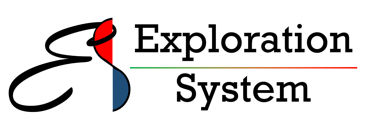Conventional Reservoir
1) Sensitivity Analysis for Saturation extraction
This requires borehole log data (related to elastic properties) from which we extract Hydrocarbon/Water saturation (Shc/Sw) and compare/calibrate that with the saturation from conventional methods. This procedure allows evaluating possibility and degree of accuracy with which hydrocarbon saturation can be quantified using seismic inversion.
2) Saturation Cube Generation
A saturation cube (in SEGY format) is generated for the target reservoir. The cube can be used for screening of leads in a frontier area, or for appraisal/development decisions in a field. The saturation cube can be directly imported in a reservoir model for volumetrics and simulation purposes.
Unconventional Reservoir
1) Sensitivity Analysis for TOC & Brittleness extraction
This procedure also requires borehole log data (related to elastic properties) from which we extract Total Organic Carbon (TOC) in gm% and compare/calibrate that with the TOC from laboratory analysis (or TOC computed from wireline logs). A brittleness log is also generated that could indicate the zones suitable for fracking (Here we define brittleness as an increase in stiffness related to increasing framework grains i.e. quartz or calcite, and decreasing porosity due to cementation. Relation of brittleness with fracability is area specific). This procedure is required to evaluate possibility and degree of accuracy with which TOC & Brittleness can be quantified using prestack seismic inverted data.
2) TOC & Brittleness Cube Generation
A TOC and a Brittleness cube (in SEGY format) are generated for the target unconventional reservoir calibrated with the parameters obtained from sensitivity analysis. The cubes can be used for locating sweet spots for drilling and well trajectory planning.
3) TOC Log Generation
Not all the wells are analyzed for TOC in the laboratory because of time and budget constraints for taking sidewall cores and laboratory analysis. Furthermore, the sparseness of samples within an organic-rich zone does not give enough information about all the beds within a source rock. Customised petrophysics models are used to accurately predict and obtain a complete picture of TOC variations within organic-rich zones in a source rock. This can potentially save time and money spent in taking sidewall cores and costly laboratory analysis.
Contact us for further information.


